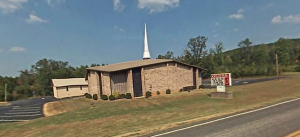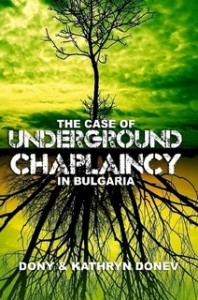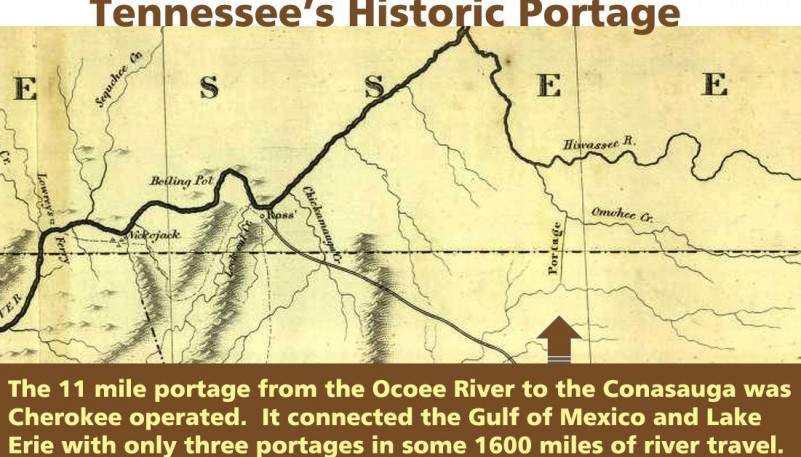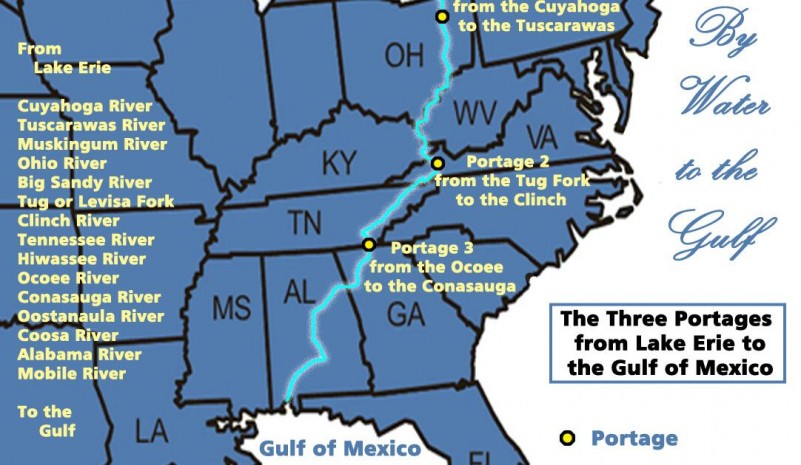Chicago’s Narragansett Church of God Celebrates 70 Years
Rev. James Slay of the Narragansett Church of God in Chicago was commissioned to write the book entitled, THIS WE BELIEVE in connection to the 1948 Church of God Declaration of Faith. During the forties, you could see him driving around Cleveland in a white and green Packard. His hair was much longer then and somewhat wavy. Later, he was heard preaching a sermon at the Narragansett Church of God in Chicago a sermon titled: “God setteth the door ajar and flings it wide open when necessary.”
On August 30, 1948, the Church of God General Assembly adopted the Church of God Declaration of Faith. Rev. James L. Slay was the chair of the committee that drafted the 14 item statement. Along with its adoption, the Assembly also recommended: “That the same Articles of Faith Committee, consisting of James L. Slay, Earl P. Paulk, Glenn C. Pettyjohn, J.L. Goins, J.A. Cross, Paul H. Walker, R.P. Johnson, E.M. Ellis, and R.C. Muncy, prepare a full document of the ‘Articles of Faith of the Church of God,’ to be presented for acceptance at the next General Assembly of the Church of God.” Despite the General Assembly recommendation, the Declaration of Faith has not been modified since its adoption in 1948.
Ocoee Church of God Celebrates 40 Years
 Historical Significance of the Tennessee/Georgia Old Federal Road in the Trail of Tears and its Connection to the Church of God
Historical Significance of the Tennessee/Georgia Old Federal Road in the Trail of Tears and its Connection to the Church of God
New Echota, Georgia was the capital of the Cherokee Nation from 1825 to 1838. This is the location where the Treaty of New Echota or the Treaty of 1835 was signed on December 29, 1835 by U.S. government officials and representatives of a minority Cherokee political faction called “The Treaty Party” or “Ridge Party”. This treaty was not approved by the Cherokee National Council nor signed by Principal Chief John Ross. Regardless, it established terms under which the Cherokee Nation were to receive a sum not exceeding five millions dollars for surrendering their lands and possessions east of the Mississippi river to the U.S. Government and agreeing to move to the Indian Territory west of the Mississippi River, which later became part of Oklahoma.
The Red Clay State Historic Park, located 17 miles southwest of the Church of God Headquarter in Cleveland, Tennessee, marks the last location of the Cherokee councils where Chief John Ross and nearly 15,000 Cherokees rejected the proposed Treaty of 1835. Despite the questionable legitimacy of this Treaty, in March 1838, it was amended and ratified by the U.S. Senate and became the legal basis for the forcible removal of the Cherokee Nation known as the Trail of Tears. The name came from the Cherokees who called the removal “Nunna-da-ul-tsun-yi,” which means “the place where they cried.” The last pieces of land controlled by the Cherokee Nation at that time were North Georgia, Northern Alabama and parts of Tennessee and North Carolina. The forced journey was through three major land routes. Each route could have taken some 1,000 miles and over four months to walk. The removal of the Cherokees and other tribes from their homelands in the Southeast began May 16, 1838.
The Georgia Road or present day Federal Road was a route of the Trail of Tears that the Cherokee people walked during their forced removal from their homelands. The route was built from 1803 to 1805 through the newly formed Cherokee Nation on a land concession secured with the 1805 Treaty of Tellico with the agreement that the U.S. Government would pay the Cherokee Nation $1,600.00. The Treaty was signed on October 25, 1805 at The Tellico Blockhouse (1794 – 1807) – an early American outpost located along the Little Tennessee River in Vonore, Monroe County, Tennessee that functioned as the location of official liaisons between the United States government and the Cherokee. The route was originally purposed to be a mail route because of the great need to link the expanding settlements during the westward expansion of the U.S. colonies. It was in 1819 after improvements to the road that it was called “the Federal Road”.
The Tellico Blockhouse was the starting point for the Old Federal Road, which connected Knoxville to Cherokee settlements in Georgia. The route ran from Niles Ferry on the Little Tennessee River near the present day U.S. Highway 411 Bridge, southward into Georgia. Starting from the Niles Ferry Crossing of the Little Tennessee River, near the U.S. Highway 411 bridge, the road went straight to a point about two miles east of the present town of Madisonville, Tennessee. This location is 20 some miles north of the Tellico Plains area that marks the site of the beginning of the Church Cleveland, Tennessee. The road continued southward via the Federal Trail connecting to the North Old Tellico Highway past the present site of Coltharp School, intersected Tennessee Highway 68 for a short distance and passed the site of the Nonaberg Church. East of Englewood, Tennessee it continued on the east side of McMinn Central High School and crossed Highway 411 near the railroad overpass. Along the west side of Etowah, the road continued near Cog Hill and the Hiwassee River near the mouth of Conasauga Creek where there was a ferry near the site of the John Hildebrand Mill. From the ferry on the Hiwassee River the road ran through the site of the present Benton, Tennessee courthouse. It continued on Welcome Valley Road and then crossed the Ocoee River at the Hildebrand Landing. From this point the road ran south and crossed U.S. Highway 64 where there is now the River Hills Church of God formerly the Ocoee Church of God. Continuing south near Old Fort, the route crossed U.S. Highway 411 and came to the Conasauga River at McNair Landing. Near the south end of the village of Tennga, Georgia is an historic marker alongside of Highway 411m which states the Old Federal Road was close to its path for the next twenty-five miles southward. It would have been at this point in Tennga that the Trail of Tears would have taken a turn onto GA-2 passing the Praters Mill near Dalton Georgia to connect in Chattanooga, Tennessee.
Out of the 15,000 Cherokee who endured the forced migration west after the Treaty of 1835, it is estimated that several thousand died along the way or in internment holding camps. This Old Federal route is where some of Cherokee holding camps would have been located. The Fort Marr or Fort Marrow military post constructed around 1814 under the 1803 Treaty, is the last visible remains of these camps. The original fort was built on the Old Federal Road near the Tennessee/Georgia state line near the Conasauga River. It was relocated in 1965 beside U.S. Hwy. 411 in Benton and then to it’s current location in the Cherokee National Forest on the grounds of the Hiwassee/Ocoee State Park Ranger Station at Gee Creek Campground in Delano, Tennessee. This location provides access to popular Church of God water baptismal sites. In June 4, 1838 Captain Marrow reported having 256 Cherokees at his fort ready for emigration.
The Native Americans were forcefully removed from their homes, plantations and farms all because of greed. Thousands of people lost their lives including the wife of Chief John Ross. Parts of the Old Federal Road have been washed away with floods of tears, but there are parts that still remain. The Church of God, having its roots in the same territory of the Cherokee, Chickamauga, Muskogee Creek, Choctaw and Chickasaw people, plays a vital role in the process of reconciliation among the descendants of the Trail of Tears. And the historical buildings and markers along the Trail or Tears must be preserved. The churches along the route even though they were not actual structures during the time period are a historical beacon of hope which still crying out for those lost on this tragic journey.
Famous boatyards near Benton, Tennessee and nearby Spring Place, Georgia were operated by the Cherokee Hildebrand and McNair families respectively. These were opposite ends of a portage of very long importance in eastern North America. The eleven mile canoe portage or, latter, a wagon transport portage, between the upper reaches of the Ocoee River in Tennessee and the Conasauga River in Georgia, provided one of the most significant “shortcuts” in the East.
Bibliata.com celebrates 20 years in ministry online
 One of our first ministry websites, Bibliata.com just celebrated 20 years of ministry online. It began in the fall of 1996 with the sole purpose to reach Bulgarians online with the Bible. We began the Bibliata.com anniversary celebration with an out loud reading through the whole Bulgarian Bible on September 16-18, 2016 involving many churches and Christian communities in Bulgaria and abroad.
One of our first ministry websites, Bibliata.com just celebrated 20 years of ministry online. It began in the fall of 1996 with the sole purpose to reach Bulgarians online with the Bible. We began the Bibliata.com anniversary celebration with an out loud reading through the whole Bulgarian Bible on September 16-18, 2016 involving many churches and Christian communities in Bulgaria and abroad.
After 20 years with several million annual views and visitors, it has become the standard for the Bulgarian Bible online. Through the years, virtually all Bulgarian Bible versions as well as many others in foreign and original tongues were published. Audio Bible, Video Bible, extensive Bible commentary, a national sermon archive, multiple device apps and Bible study platforms are only a few of the projects completed. Additionally, a new Bulgarian translation in the works since 2007 is close to its publication date for the 500th anniversary of the Protestant Reformation. But this is not all…
The story of the Bulgarian Bible online is centered not only in products and projects, but in the very people we work with to create a community of believers, who pray, talk, grow and live together in the footsteps of the Savior. And this is worth much more than just 20 years of work and perseverance…
10 Years Bulgarian Chaplaincy Association
Comments Off on 10 Years Bulgarian Chaplaincy Association
 A decade ago we established the Bulgarian Chaplaincy Association with a vision for ministry in the Bulgarian army, Ministry of Internal Affairs, jail and prison systems, Bulgarian seaports and airports, and the healthcare system. Out of these five goals set before us in 2006 we have fulfilled them all:
A decade ago we established the Bulgarian Chaplaincy Association with a vision for ministry in the Bulgarian army, Ministry of Internal Affairs, jail and prison systems, Bulgarian seaports and airports, and the healthcare system. Out of these five goals set before us in 2006 we have fulfilled them all:
1. Tolerant and equal representations of all confessions in the chaplaincy ministry
2. The implementation of a contextualized chaplaincy model
3. The integration of chaplaincy education in all Bulgarian theological higher educational institutions
4. And the educational and consultant work on government and church levels
except:
5. The establishment of legal grounds for regular paid chaplaincy service in the Bulgarian army, Ministry of Internal Affairs, jail and prison systems, Bulgarian seaports and airports, and the healthcare system.
After designing and teaching the Masters of Chaplaincy Ministry program in two major evangelical universities in Bulgaria, we now have some of our trained chaplains working in jails, prisons, healthcare, civil emergency services and the corporate/political level. The legal system in Bulgaria, however, is yet to provide the proper measure for restoring chaplaincy in Bulgaria’s armed forces. To this final step fulfillment we pledge out support in 2016.
Bulgarian Chaplaincy Association: Vision and Resolution
Bulgarian Chaplaincy Association
Resolution No. 1
We,
The founding members of the Bulgarian Chaplaincy Association in its first national assembly today August 19, 2006 in hotel Diana Palace, Yambol
In regard of:
1. Bulgaria’s membership in NATO and its upcoming integration in the European Union
2. The transformations within the Bulgarian Army from mandatory toward standard paid service and the participation of Bulgarian contingent in NATO and UN missions
3. Contract agreement for NATO airbases on Bulgarian territory
4. The strategic renewal of chaplaincy ministry in the Bulgarian army
5. And the present need of chaplaincy ministry integrated in the Bulgarian army, Ministry of Internal Affairs, jail and prison systems, Bulgarian seaports and airports, and the healthcare system,
Declare our support toward:
1. The establishment of legal grounds for regular paid chaplaincy service in the Bulgarian army, Ministry of Internal Affairs, jail and prison systems, Bulgarian seaports and airports, and the healthcare system
2. Tolerant and equal representations of all confessions in the chaplaincy ministry
3. The implementation of a contextualized chaplaincy model
4. The integration of chaplaincy education in all Bulgarian theological higher educational institutions
5. And the educational and consultant work on government and church levels.
We, the founding members of the Bulgarian Chaplaincy Association will work toward the renewal, popularization and equal religious representation of chaplaincy ministry in all professional areas.
August 19, 2006
Diana Palace, Yambol
Also important [click to read]:
- U.S. Department of State recognizes our chaplaincy efforts in Bulgaria
- Bulgarian Chaplaincy Association: Integration Proposal with Local NATO Programs
- Chronology of our role and involvement in developing Church of God chaplaincy in Bulgaria since 2001
- Master’s of Chaplaincy Ministry Program in Bulgaria Reflections
- The Past Decade of Chaplaincy in Bulgaria (2006-2016)
- Related Publications and Presentations by Cup & Cross Ministries International
95 Years Ago Ivan Voronaev Finally Reached the City of Odessa
![51Sa1IcA8OL._SY344_PJlook-inside-v2,TopRight,1,0_SH20_BO1,204,203,200_[1]](https://cupandcross.com/wp-content/uploads/2014/03/51Sa1IcA8OL._SY344_PJlook-inside-v2TopRight10_SH20_BO1204203200_1.jpg) Not So “Little Odessa” (from the book The Life and Ministry of Rev. Ivan Voronev)
Not So “Little Odessa” (from the book The Life and Ministry of Rev. Ivan Voronev)
By the end of the summer of 1921, Voronaev and Koltovich received their permits to return to Russia and on August 12, 1921 landed in Odessa.[1] It had taken Voronaev over a decade of traveling around the globe to return to his motherland as a Pentecostal preacher and fulfill the divine calling: “Voronaev, Voronaev. Go to Russia!”
The results of his commitment and sacrifice increased quickly. For the first three months in Odessa, he labored among the evangelical churches, sharing his testimony and preaching the full gospel. Then, on November 21, 1921 he organized the Christian Evangelical Faith (Confession).[2] In two years time, the new community had over 370 members and the news of the new Pentecostal teaching spread rapidly across the U.S.S.R. In 1924, the Odessa community organized a regional assembly and at the second assembly in 1925, the Ukrainian Union of Evangelical Christian Faith (Confession) was established.
By 1927, more than 350 Pentecostal Assemblies with membership of 17,000 strong were part of the Union,[3] which continued to grow and by 1944 exceeded 20,000 in Ukraine and 80,000 strong in the whole U.S.S.R.[4] Voronaev’s church in Odessa alone was reported to have over 1,000 members.[5] Government persecution was inevitable. Numerous publications against Voronaev’s work were circulated not only through Communist propaganda, but by some Baptist periodicals, who characterized the Pentecostal ministry as sectarian at best.[6] The Regime could not afford the meetings of large groups of people who were not part of the Communist Party. The Voronaev family paid the ultimate price of their calling for organizing and growing the Pentecostal community in Communist Russia.
In the summer of 1930 the repressions against Russian Pentecostals began. On July 6 (almost exactly 10 years after he left America for his prophesied mission to Russia) Ivan E. Voronaev and B.R. Koltovich, along with some 800 Russian pastors,[7] were arrested for preaching the Gospel through the support of churches outside the U.S.S.R., both sufficient reasons to be convicted in espionage and imprisoned in Siberian work camps.[8] Voronaev’s wife was also sentenced to imprisonment in mid-Asia. Their children were left without provision and no one to take care of them…[9]
[1] Ibid.,8.
[2] Ibid.,9.
[3] Koltovich, “Minutes of the Jubilee Meeting”, 10 and Evangelist (Odessa: 1928, No. 1) Quoted in Durasoff, 73 and Smolchuck, 4.
[4] Zhidkov, “On the Roads …” (Bv, No. 3, 1957), 62. Around 1936 Donald Gee, who had an extensive ministry at the Assemblies of God training program for ministers at Gdanks (Danzig), Poland, claimed some 80,000 Pentecostals in Russia in Upon All Flesh (Springfield: The Gospel Publishing House, 1947), 31. Both quoted in Durasoff, The Russian Protestants. For a more detail discussion on the growth of Pentecostalism in the U.S.S.R see V.I. Franchuk, Prossila Rossia Dozhdia u Gospoda (n/a: Kiev, 2001).
[5] McLeod, Hugh. Christianity: World Christianities c. 1914-c. 2000 (Cambridge: Cambridge University Press, 2006), 97.
[6] Durasoff, 73.
[7] McLeod, 97.
[8] Burgess, Stanley M. and Eduard M. van der Maas, The New International Dictionary of Pentecostal and Charismatic Movements (Zondervan: Grand Rapids, 2002), 1179-80.
[9] For the situation in Russia and the story of the Voronaev children see Voronaeff, Paul. Christians under the Hammer and the Sickle (Wichita: Defender Publishers, 1935). Book was printed a total of 11 times in some three years time.
Chaplaincy in Bulgaria: Celebrating 10 Years of Bulgarian Chaplaincy Association
 Bulgarian Chaplaincy Association: Celebrating a Decade of Ministry
Bulgarian Chaplaincy Association: Celebrating a Decade of Ministry
We are proud to announce that the Master’s of Chaplaincy Ministry Program, we designed and launched in Bulgaria in 2006, has been selected to be part of the Social Service Program of New Bulgarian University. After being for years a valuable part of the regular curriculum of the Bulgarian Evangelical Theological Institute and the St. Trivelius Institute in the capital Sofia, the chaplaincy program has received the highest level of recognition as successful graduates will be finally able to receive government recognized degrees and apply their knowledge and training in chaplaincy on a professional level. The chaplaincy program can also serve within the Integration Proposal of local NATO programs and be instrumental in dealing with the enormous wave of Middle East migrants crossing through Bulgaria today.
It has taken over 10 years since the envisioning of the Master’s of Chaplaincy Ministry in Bulgaria for its final realization in the Bulgarian national and cultural context. Through this time of struggle and anticipation, we encountered a number of obstacles as follows:
- Government difficulties on various levels within the Bulgarian administration and a direct repression from the Ministry of Justice, which was later included in the Religious Freedom report of the U.S. Department of State
- Administrative difficulties with approving the program as a legal educational process, while no legal background of chaplaincy had ever been provided in Bulgaria
- Economic difficulties with arranging location and time placement for the program, lecturers, the very much needed student scholarships and various other academic expenses
- Proper student selection through a special screening process to ensure only qualified candidates for placement within the Master’s Program
- And of course, spiritual difficulties with the whole process of establishing chaplaincy in Bulgaria again being a definite spiritual warfare for all participants
Now, that the Bulgarian Chaplaincy Program is an undeniable fact, we realize how our training was more than just a necessity for the implementation of such a great task. It was also well sufficient for a time as such.
With the crises within the Bible College system of Bulgaria and the potential change of status for the Bulgarian Evangelical Theological Institute (Theological Seminary) in Sofia, the professional programs offered thus far will have to be assimilated into some liberal art schools with a newly evaluated perspective on Christian education in Bulgaria or they will be forever lost.
In this context, some modifications may be required in the process to reflect more on these changes and their effects for the Chaplaincy Program as well as on the social role of chaplaincy in Bulgaria. Such search for equilibrium is only normal given that historically Bulgaria has placed chaplaincy ministry only within the perimeter of army, prisons and hospitals.
The final goal in our educational strategy, which directly targets legislation and practical implementation of chaplain ministry within various levels of government infrastructure, now remains for the student chaplains graduating with a masters degree specifically designed for their area of ministry from our program. Cooperation with a vast social network for this task is a must, and our students are already well trained through a practicum that strongly demands their cooperative work together.
And while the Bulgarian armed forces still remain the only one within the structures of NATO that has no chaplaincy whatsoever, professional Chaplaincy, as we foresaw it a decade ago, will most probably begin with a new vision within the reformed infrastructure of the Bulgarian army and shortly afterwards move to other professional branches as well.
Also important [click to read]:
- U.S. Department of State recognizes our chaplaincy efforts in Bulgaria
- Bulgarian Chaplaincy Association: Integration Proposal with Local NATO Programs
- Bulgarian Chaplaincy Association: Vision and Resolution
- Chronology of our role and involvement in developing Church of God chaplaincy in Bulgaria since 2001
- Master’s of Chaplaincy Ministry Program in Bulgaria Reflections
- The Past Decade of Chaplaincy in Bulgaria (2006-2016)
- Related Publications and Presentations by Cup & Cross Ministries International
110 Years ago, William J. Seymour was baptized with the Holy Spirit
After starting a fast on April 6, 1906 in Los Angeles, the small group experienced what would become the first baptism with the Holy Spirit at the Azusa Street Revival. Several more followed shortly. William J. Seymour himself was baptized 110 years ago on April 12, 1906.
On the seventh, which was Good Friday, Seymour and his followers leased an abandoned church property at 312 Azusa Street and begin cleaning it up. Easter was on April 15, 1906 when they held their very first Pentecostal service at Azusa Street. The rest is history…
110 Years ago, the Azusa Street Revival Began with a Fast

On April 6, 1906 William J. Seymour and the faithful few gathered with him at the Asberry house, decided to engage in a ten-day fast while waiting on the baptism in the Spirit. The first baptism with the Holy Spirit would occur just three days later. Seymour himself would be baptized on the sixth day of the fast and on the seventh, which was Good Friday, Seymour and his followers leased an abandoned church property at 312 Azusa Street and begin cleaning it up. Easter was on April 15, 1906 when they held their very first Pentecostal service at Azusa Street. The rest is history…
Azusa Street Chronology 110 Years Ago…

JANUARY 2, 1906 William SEYMOUR ENROLLS in Charles PARHAM’S BIBLE TRAINING SCHOOL in Houston, Texas
FEBRUARY 1, 1906 During early February 1906, William J. Seymour receives an invitation from Mrs. Julia W. Hutchins to serve as pastor of the Holiness Church congregation she has founded in Los Angeles, California.
FEBRUARY 10, 1906 SEYMOUR LEAVES the BIBLE SCHOOL
FEBRUARY 22, 1906 William J. Seymour arrives in Los Angeles, California
FEBRUARY 24, 1906 Seymour preaches his first sermon as pastor of the Holiness Church at 9th Street and Santa Fe Avenue. He continues preaching on Sunday, February 25; Tuesday, February 27; and Friday, March 2, while holding meetings at 3 p.m. each afternoon.
MARCH 4, 1906 Seymour is LOCKED OUT of the church
MARCH 7, 1906 PRAYER MEETING at 114 SOUTH UNION STREET
MARCH 12, 1906 NIGHTLY MEETINGS BEGIN at 312 N. BONNIE BRAE St.
APRIL 6, 1906 The group at the Asburry house decides to engage in a 10-day fast while they pray for the baptism in the Spirit.
APRIL 9, 1906 FIRST BAPTISM IN THE HOLY SPIRIT IN LOS ANGELES
APRIL 12, 1906 William J. Seymour receives his baptism in the Holy Spirit and speaks in tongues.
APRIL 13, 1906 On Good Friday, Seymour and his friends lease the property at 312 Azusa Street and begin cleaning it up.
APRIL 15, 1906 SEYMOUR’S FIRST SERVICE AT 312 AZUSA STREET on EASTER 1906
APRIL 17, 1906 The LA TIMES INVESTIGATES
APRIL 18, 1906 At 5:48 a.m., San Francisco, California is rocked by an earthquake. During the next 4 days, the city burns. The first report on the Azusa Street Mission appears under the title, “Weird Babel of Tongues,” in the Los Angeles Daily Times. The Mission begins to grow.
APRIL 19, 1906 Los Angeles feels two earthquakes.
APRIL 21, 1906 BARTLEMAN WRITES “THE EARTHQUAKE!!!”
25 Years of Miracles: 2009
 Mission BULGARIA 2009: Services in the Yambol Region
Mission BULGARIA 2009: Services in the Yambol Region
At the recent regional ministry conference, where the Yambol, Sliven, Bourgas and Nova Zagora regions were represented, many reported exciting ministry results in various locations. Revivals broke in the villages of Kamenetz and Malomir, spontaneous prayer meetings arise often, while healings and various miracles are reported almost weekly. A water baptismal service for new believers is scheduled for the beginning in August at the Thundja River. In the midst of severe poverty and political unrest, the move of God has become a life answer for many. It is personally challenging when you see the weather and earth beaten hands of the man worshiping beside you and you witness the widow giving her last mite. Then when service is over you notice how the frail elderly ladies cover their heads with a white cloth so that the sun does not beat on their heads during their walk home. So to say that we spent our day ministering to those of the village churches is an understatement because it is those of the village churches whom ministered to us. Our last service ended in the afternoon and it was truly a special day.
National Youth Camp in Bulgaria (August 10, 2009)
In years past, we have visited and ministered to a dozen different youth camps in Bulgaria. Each of them has been unique and special, but it has been a while since we have ministered at a youth camp where people have been so hungry to receive from God. We prayed for the healing of dozens of people. Many more were delivered instantly from various infirmities, both in soul and in body. Eight young people received the baptism with the Holy Spirit the very first night and many more were baptized in the following evenings. You could see parents and children praying for each other around the clock. One girl saw a vision of the “Heart of God” being exalted in our midst. As we continued with our next ministry appointment in the city of Varshetz, some stayed behind to spend one more day in the presence of the Lord on the top of the mountain. We will reconvene with them this week at the next youth camp organized at the Karandila Mountain near the town of Sliven.
Renewing of the Evening Services in Yambol (September 1, 2009)
We report that with the assistance of our team and the help of many partners in ministry, the renewal of Sunday evening services at the Yambol Pentecostal Church has been successful. In the course of this work, we were able to witness a dramatic outpouring of the Holy Spirit each Sunday service from 6 to 10 PM as some hundred people gather for worship. We are still receiving reports of various healings and miracles that occurred each night, among which are:
- A lady of the worship team, who has played the violin in church all her life, scheduled for surgery that same week due to a bone-ligament condition was instantly healed during the prayer.
- Deliverance of multiple cases of headache, migraines and sinus were reported at the end of the alter service.
- As the church continued in several hours of prayer, around 9 PM a lady threw herself on the floor with screams and convulsions and was delivered from a demon.
- An elderly gentleman with a chronic condition in his vestibular apparatus due to a foot injury reported instant improvement and ran joyfully through the church.
- Several people reported improvement in their eyesight and hearing.
- Instant disappearing of pain and discomfort in bones, muscles, ligaments and chronicle conditions in back, hip and neck areas were reported during the prayer.
- A lady with a broken arm, who was watching the service live on the internet, later reported that her pain disappeared during the course of the service.
- Several people, who were brought to service from the local Dialysis Treatment Center, also reported instant relief. We are now waiting for doctoral reports as confirmation for the healings.
He Remains the Same (November 20, 2009)
This past Sunday we were able to return to the Awakening Church of God in Stara Zagora. After the Word, all in service gathered at the alter. Although the church was full, there were several families absent due to the flu epidemic which has spread across the country with 8 dead already accounted for. But during this time when the government is closing down schools and people are wearing masks for health reasons, the Lord’s healing power remains the same and we are reminded of His promise that He will protect His people and “it shall be well with them”. Among this, we were encouraged powerfully by the presence of the Holy Spirit in our meetings. After all the changes and transformations the Stara Zagora church has gone through during years past, it was encouraging that God remains the same. The people who are faithful to Him can trust in His ever-sameness with their lives and future, for His promises to us change not. Our team is planning to return to Stara Zagora before the end of the month for the next leg of our National Mega Youth Rally in Bulgaria











